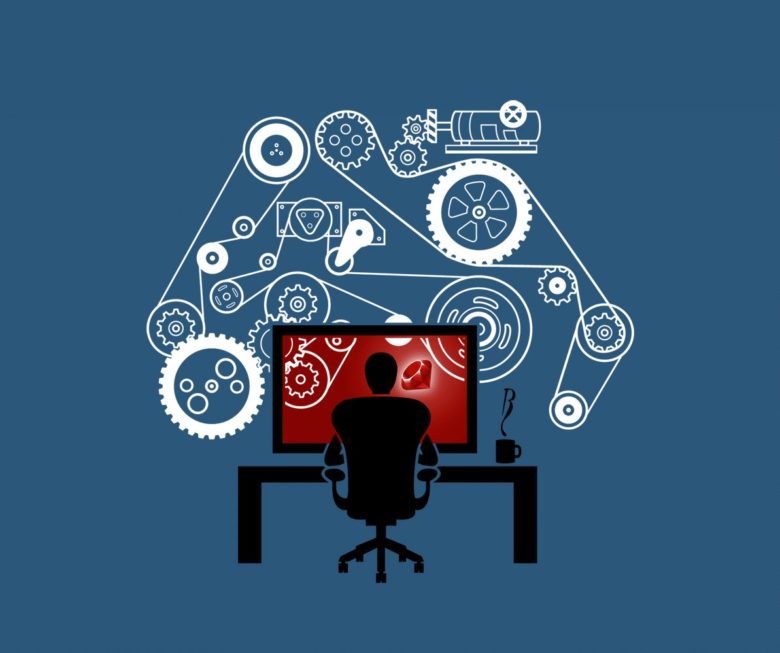Data is at the heart of the modern world. Every year, more and more businesses are leveraging the powers of data collection.
Having access to data gives you an unfair advantage over your competition. You can make more informed business decisions. You can react faster to changes in the market. And you can have a much closer insight into the minds of your customers.
But how exactly do you collect large amounts of data? How much of the work do you still have to do by hand? And how much can you automate?
Read this article to find out!
Manual Data Collection

Img source: manufacturingglobal.com
Finding data used to be a tedious and time-consuming process. The introduction of the internet has made collecting information much simpler. All you need is a computer, an internet connection, and the ability to copy and paste. If all you need to find is a few phone numbers, manual data collection is a good way to do that.
It is when you want to gather larger amounts of data that you run into problems. Finding, copying, and formatting a large amount of information by hand can take days or weeks. This has high alternative costs.
The time you spend copying and pasting could’ve been spent doing something more beneficial to your business. Human error is another factor. When collecting large amounts of data by hand, mistakes are unavoidable.
Luckily, now there’s a much faster way to collect and analyze data.
| Pros: | Cons: |
| ● No setup required
● Can be done by anyone |
● Very slow
● Can get expensive ● Hard to gather large amounts of data ● Possibility of human error |
Web Scraping
Automated data scraping allows you to process gigantic amounts of information. A web scraper is a sophisticated piece of data-gathering software. It crawls the web, gathers the data you need, and outputs the result in an easy-to-read format. The software operates in four distinct stages: crawling, scraping, extracting, and formatting.
- The web scraper visits the page containing the data. Once there, it scans for the desired information.
- The data is downloaded from the web page and put into a separate piece of software.
- The web scraper sorts through the data and filters out the desired information.
- The web scraper arranges it logically. It then converts it to an end-user format so that you can open it on your computer. Common output formats include CSV, SV, XML, and JSON.
| Pros: | Cons: |
| ● Ability to gather a gigantic amount of high-quality data
● Extremely fast ● Cost-effective ● No possibility of human error |
● Setup required if done in-house
● Start-up costs |
What are the main applications of web scraping?
Until recently, there were certain inputs data scrapers couldn’t process. Notable examples were images and videos. In these cases, there was no other choice but to collect the data manually. Things have changed.
Web scraping tech has improved a lot in the last few years. Modern web scrapers can now help automate virtually all data collection tasks. The only real exception is web pages whose owners deliberately put in obstacles to guard against the use of data scrapers.
You can use data scraping for thousands of different tasks. Here are a few of the most common examples:
Price comparison and monitoring

Img source: makridestaxconsultants.com
Price management has become an essential activity for brands and retailers. By gathering data on the product prices from all over the internet, web scraping help businesses make better pricing decisions.
Marketing
To stay competitive, advertising agencies and in-house marketing teams have to keep track of a gigantic amount of data. And this data comes from hundreds of different sources. Web scrapers provide an easy solution to this problem by automating the process.
Competitor research helps you to understand what trends are currently on the market. So that you can further analyze and utilize the strengths of your competitors’ marketing campaigns to get started with your target audience.
It allows you to identify industry problems that your competitors might not have noticed. So that you can fill in the gap and provide a new solution. This information can be used to build successful marketing campaigns and product enhancements.
In addition, strong competitor research gives you a deeper understanding of the preferences/dislikes of your potential customers. So that you can go on to develop a quality product or service.
Getting a primary database for segmentation and testing

Img source: lizard-webdesign.com
Data scraping can help you find new customers. It can do this by gathering data from online directories and classifieds. And we’re not only talking about creating databases for cold-calling.
You can limit the search to find only those people who are showing an interest in your product category (in-market audiences). If you are a b2b business and you need to check market reaction, you can be interested in b2b contacts for customer development interviews or getting the first product testers/followers.
Reputation and Customer Sentiment Management
Today, your brand reputation is everything. When making a purchasing decision, most people consult online reviews and social media. Web scraping can give you direct access to every single review and tweet in which your product is mentioned.
You can improve your products or services with web scraping tools. Track reviews, feedbacks, opinions to study the reaction of the target audience. In other words, it is massively useful information.
Protecting the company’s reputation, creating a positive image, lively communication with customers, and quality marketing and PR are possible by conducting marketing research and monitoring brand mentions in social media.
That’s exactly the way to get information directly from the customers and effectively manage your reputation on the Internet.
Machine learning

Img source: etamax.de
Neural networks are a modern marvel. But machines need a large amount of data to learn effectively. Web scrapers can help you improve your AI by providing you with high-quality data.
By this point, you might be wondering: it’s data scraping is this amazing, why isn’t it used more widely? The main drawback to web scraping is its high barrier to entry. Setting up your automated data scraper is no easy task. It requires expert knowledge and programming experience.
Because of this, many businesses miss out on the benefits of automated data collection. Web scraping service allows you to focus on your major processes and get data as a service. Click here to learn more about FindDataLab, one of the industry experts and give your business a competitive edge today!




